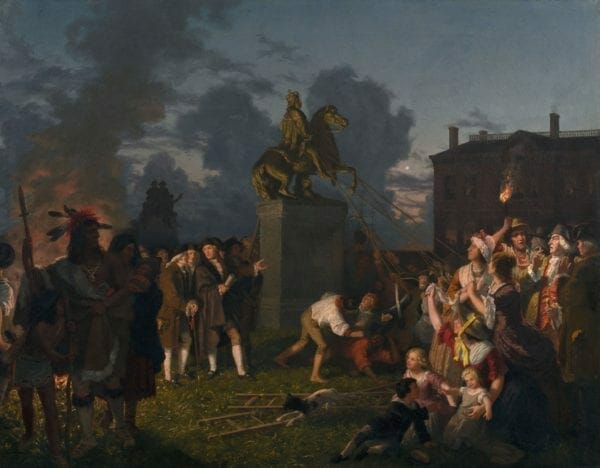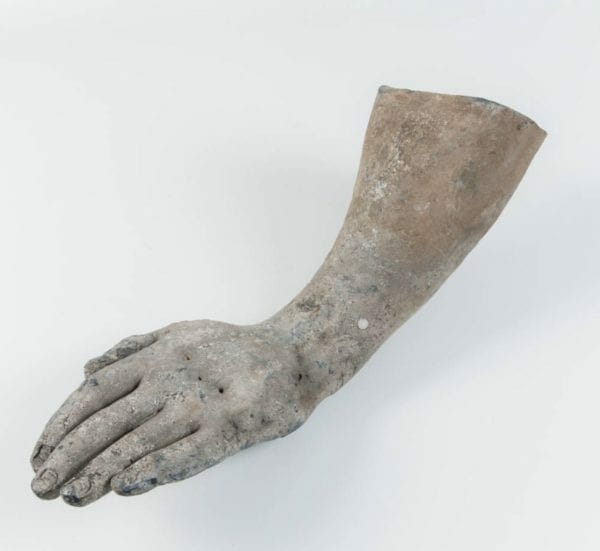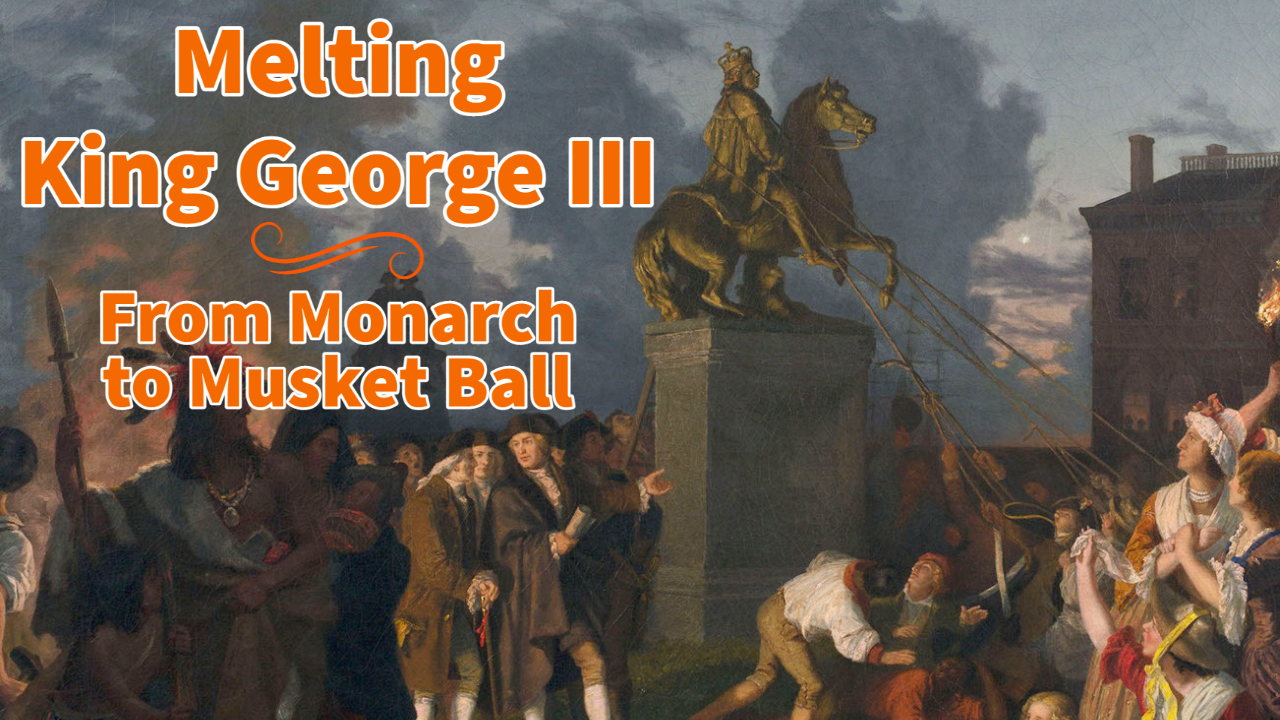USA – -(AmmoLand.com)- In June 1766, the New York General Assembly commissioned an equestrian statue of their King, George III. The much-reviled Stamp Act had been repealed and the colonists were feeling grateful toward their “most gracious sovereign.” By March 1770, the statue had been completed and erected at Bowling Green in Manhattan.
Slightly larger than life-size, the lead statue was gilded in gold and placed atop a 15-foot high marble pedestal. A marvelous sight, it would enjoy only a few short years in its place of prominence before the colonists’ attitude toward King George III changed dramatically.
Just a few days after the Declaration of Independence had been written and adopted, General George Washington had the document read aloud to the citizens and soldiers in New York City on July 9, 1776. It was now crystal clear to the patriots of the city what must be done: the king had to go, both literally and in effigy.

That night, some 40 colonial soldiers and sailors made their way to Bowling Green, determined to topple the gleaming symbol of monarchy. With multiple ropes tied around the statue, the men struggled for a bit, but eventually prevailed. The two-ton statue toppled from its lofty pedestal and lay on the ground at the feet of the patriots.
Instead of letting it stay on the ground as a reminder of their cause, the city’s residents and soldiers had more practical uses for it. It takes quite a bit of gold gilding to cover a 4,000-pound statue, so the first order of business was to remove as much of the gold as possible and leave only the lead.
With the base metal now exposed, the statue’s two tons of lead was destined to be repurposed in the most practical way possible by a people now engaged in an armed rebellion against their ruler: turn it into musket balls. Lots and lots of musket balls. The ultimate twist of fate for a British soldier would be to die from a gunshot wound inflicted by a lead musket ball crafted from the former likeness of their ruler.
The statue was cut into pieces and taken from New York City to a foundry in Litchfield, Connecticut. One contemporary source recorded that it took approximately one pound of lead to produce 20 musket balls. When all was said and done, some 42,088 projectiles had been cast.
If you do the math, however, that number doesn’t add up to the full weight of the statue. In fact, it only accounts for about half of it. So what happened to the rest?

For starters, the head was absconded immediately. It was paraded around on a pike, had a musket ball driven through it, the nose cut off, buried at least once, and eventually ended up back in England.
Over the next few centuries, the remains of the statue slowly emerged. Pieces of the saddle, the horse’s hind end and tail, the king’s cloak, and his thigh were all identified. Other pieces, far too mangled to be artistically identified, were also recovered. Some of the pieces are in private hands, while others reside in public institutions, such as the Connecticut State Library, Wilton Historical Society, New York Historical Society, and the Museum of the City of New York.
A rather large piece (21″ overall) of George III’s hand, wrist, and forearm was sold by Skinner Auctions in 2019. It was expected to sell for somewhere between $15,000 and $25,000, but it blew past the estimates and sold for $207,000. The piece was found in 1991 at a home originally owned by Job Burlock, a known Tory. The piece was analyzed and found to be an almost perfect match to the pieces held by the New York Historical Society.

Those two large chunks from the New York Historical Society are now on display at the Museum of the American Revolution in Philadelphia. The pieces are displayed next to a rather unassuming object: a musket ball recovered from the 1778 battlefield at Monmouth, New Jersey. Tests on its composition reveal it to be the same blend of lead and tin as is found in verified pieces of the former statue.
So there you have it: proof positive that Continental soldiers did indeed fire once-effigial pieces of King George III at the soldiers he sent to quell the rebellion.
About Logan Metesh
Logan Metesh is a historian with a focus on firearms history and development. He runs High Caliber History LLC and has more than a decade of experience working for the Smithsonian Institution, the National Park Service, and the NRA Museums. His ability to present history and research in an engaging manner has made him a sought after consultant, writer, and museum professional. The ease with which he can recall obscure historical facts and figures makes him very good at Jeopardy!, but exceptionally bad at geometry.






That’s what becomes of tyrants.
Conservators discovered a 370-year-old musket–ball hole in the body of the figure, near the orb held in the monarch’s outstretched hand. Interesting information. Vex 5
Great story, and a good account of justice being served in the end. I shall happily add it to my repertoire of stories from the time we gave George Three his due, as recompense for him not giving us ours. Seems he had forgotten the thirteen charters granted by his predecessors to each of the companies of people seeking to resettle in North America. Those charters had all been trashed by various kings of Britain. So our forebears were forced to choose.. the original agreements under which we left all behind, slavery to the man with the guns, or take… Read more »
What goes around comes around. King George cast his seed and his troops reaped the reward in the form of musket balls.
Very interesting , thank you for that. This stuff should be taught in history classes. Oh wait, do the schools even teach U.S. history anymore?